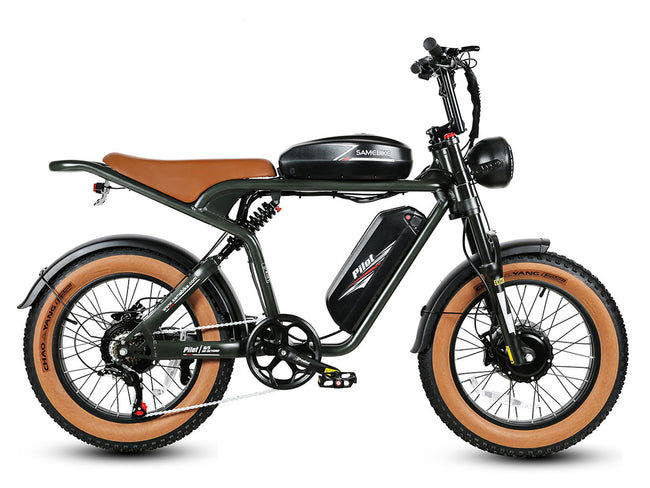Due to strict regulations, traditional gasoline-powered motorcycles, the classic representative of two-wheelers, are slowly fading out of the times. However, the emergence of electric motorcycles has brought vitality to the two-wheeled motorcycle industry. Choosing a suitable motor has become the source of motorcycle power. So how to choose motorcycle hub motor? Let's dive deeper from the perspective of brushless and brushed.

The difference between brushed DC motors and brushless motors is whether they are equipped with commonly used brushes and commutators. The commutation of brushed DC motors has always been achieved by contacting graphite brushes with an annular commutator installed on the rotor. The brushless DC motor feeds back the rotor position to the control circuit through the Hall sensor, allowing it to know the exact time of the motor phase reversal.
The energization principles of brushed motors and brushless motors are different, and their internal structures are also different. For hub-type motors, the output method of motor torque (whether it is decelerated through a gear reduction mechanism) is different, and its mechanical structure is also different.
The difference between brushless motor and brush motor
The stator of a brushed DC motor is equipped with fixed main magnetic poles and brushes, and the rotor is equipped with an armature winding and a commutator. The electric energy from the DC power supply enters the armature winding through the brushes and commutator, generating armature current. The magnetic field generated by the armature current interacts with the main magnetic field to generate electromagnetic torque, which causes the motor to rotate and drive the load.
Brushless DC motors are commutated by electronics, while brushed motors are commutated by brushes, so brushed motors are noisier and have a lower lifespan. Generally, the lifespan of brushed motors is less than 600 hours, while the lifespan of brushless motors is normal. In some cases, it is determined by the bearing life, which will exceed 5,000 hours.
Performance comparison between brushless motors and brushed motors
Frequent switching of brushes in brushed motors may cause electromagnetic interference to other electronic equipment. The brushed DC motor regulates speed through voltage, which is relatively simple and convenient, but will be limited when the speed is relatively low. Brushless DC motors can also adjust speed through voltage, and can also use PWM speed adjustment to facilitate speed control at low speeds.
In terms of power and speed, it mainly depends on the design parameters of the motor. The brushes of a brushed motor cannot reverse direction at high power because the arc generated is too large, so the power is generally not too high, usually within 5P. Brushless motors can achieve a lot of power. Brush motors will not have very high speeds because the motor brushes are easily worn out, while brushless motors may reach high speeds such as 80,000 rpm.
Different advantages of brushless motors and brushed motors
Brush motors have their advantages, which are low cost and easy to control. The cost of brushless motors is generally much higher and requires more professional knowledge in control. As brushless motor control technology continues to mature, the cost of electronic components decreases, people's requirements for product quality increase, and there is pressure for energy conservation and emission reduction, more and more brushed motors and AC motors will be replaced by brushless DC motors.
Due to the existence of brushes and commutators, brushed motors have complex structures, poor reliability, many faults, heavy maintenance workload, short lifespan, and commutation sparks are prone to electromagnetic interference. Brushless motors have no brushes and therefore no related interfaces, so they are cleaner, less noisy, virtually maintenance-free and have a longer lifespan.
In addition to choosing a suitable motor for an electric motorcycle, you also need to choose motors with different powers. The speed and mileage of electric motorcycles are also different:
ENGWE M20 electric motorcycle is equipped with a 750W hub Brushless Motor, with a top speed of 28MPH=45km/h and a maximum mileage of 75KM.
SAMEBIKIE M20 electric motorcycle equipped with a 1000W hub Brushless Motor, the maximum speed is 50km/h and the maximum mileage is 120KM.
In general, brushless motors are the best choice for electric bicycles and electric motorcycles with their cleaner operation, longer service life and excellent performance. For riders who pursue speed and performance, choosing a high-power motor can better meet their riding needs.







































